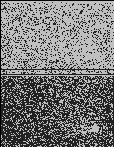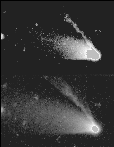
Figure 6: a) The mask resulting from thresholding the modulus of the curvature at k = 0.09. b) The final mask as described in the text
We have presented a new method for the discrimination of point-like objects using surface curvature. The characterization by the curvature offers a very general and flexible mean which can be adapted to any specific problem without any necessary a priori knowledge of the shape of the point-like objects. A few trials is basically what is needed to determine the threshold for discrimination. Two applications have illustrated this method. In the first one, stars were removed from an extended object, the dust tail of comet P/Halley. In the second one, cosmic ray impacts were removed from single CCD images of the solar corona. In both cases, the point-like objects are efficiently detected and corrected using a pyramidal interpolation.

Figure 6: a) The mask resulting from thresholding the modulus of the curvature
at k = 0.09. b) The final mask as described in the text

Figure 7: The intensity of the final, ``restored" image of comet
P/Halley using the intensity ranges.
a) 900 < I < 1900, similar to Fig. 3 (click here). b) 50< I>1900

Figure 8: Intensity image og the solar corona (north-west quadrant). The
long exposure time caused saturation of the equatorial K corona and the head of comet Hyakutake. The Sun
and inner corona are blocked by the occulter-bottom left corner)

Figure 9: Intensity of the final ``restored" image of
the solar corona including comet Hyakutake

Figure 10: Difference of the original and corrected images revealing mostly
impacts of cosmic rays and a few stars